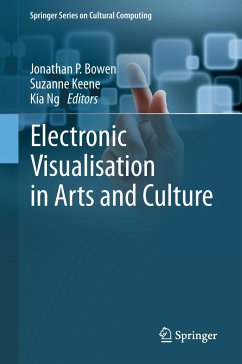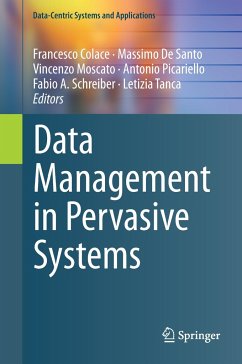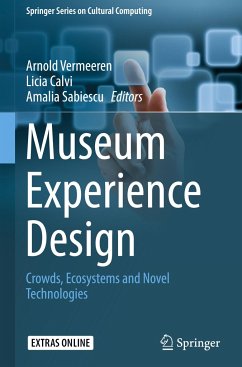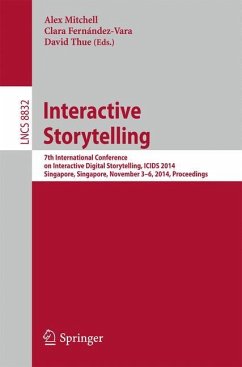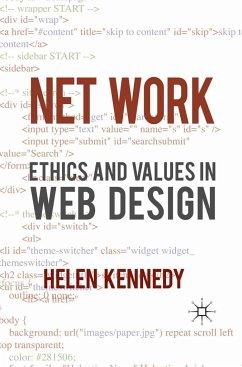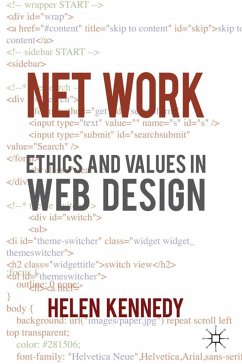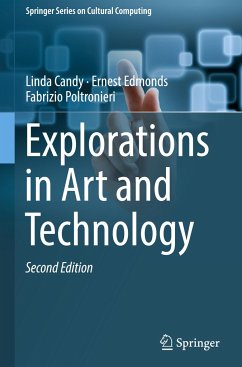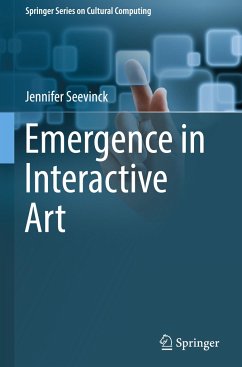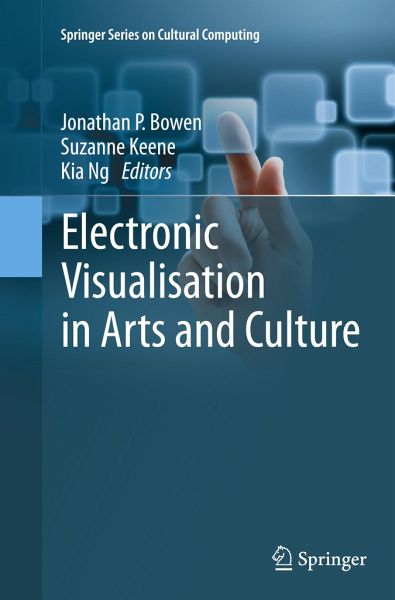
Electronic Visualisation in Arts and Culture
Versandkostenfrei!
Versandfertig in 6-10 Tagen
113,99 €
inkl. MwSt.

PAYBACK Punkte
57 °P sammeln!
Presenting the latest technological developments in arts and culture, this volume demonstrates the advantages of a union between art and science. Electronic Visualisation in Arts and Culture is presented in five parts:Imaging and CultureNew Art PracticeSeeing MotionInteraction and Interfaces Visualising HeritageElectronic Visualisation in Arts and Culture explores a variety of new theory and technologies, including devices and techniques for motion capture for music and performance, advanced photographic techniques, computer generated images derived from different sources, game engine software...
Presenting the latest technological developments in arts and culture, this volume demonstrates the advantages of a union between art and science. Electronic Visualisation in Arts and Culture is presented in five parts:
Imaging and CultureNew Art PracticeSeeing MotionInteraction and Interfaces Visualising Heritage
Electronic Visualisation in Arts and Culture explores a variety of new theory and technologies, including devices and techniques for motion capture for music and performance, advanced photographic techniques, computer generated images derived from different sources, game engine software, airflow to capture the motions of bird flight and low-altitude imagery from airborne devices.
The international authors of this book are practising experts from universities, art practices and organisations, research centres and independent research. They describe electronic visualisation used for such diverse aspects of culture as airborne imagery, computer generated art based on the autoimmune system, motion capture for music and for sign language, the visualisation of time and the long term preservation of these materials. Selected from the EVA London conferences from 2009-2012, held in association with the Computer Arts Society of the British Computer Society, the authors have reviewed, extended and fully updated their work for this state-of-the-art volume.
Imaging and CultureNew Art PracticeSeeing MotionInteraction and Interfaces Visualising Heritage
Electronic Visualisation in Arts and Culture explores a variety of new theory and technologies, including devices and techniques for motion capture for music and performance, advanced photographic techniques, computer generated images derived from different sources, game engine software, airflow to capture the motions of bird flight and low-altitude imagery from airborne devices.
The international authors of this book are practising experts from universities, art practices and organisations, research centres and independent research. They describe electronic visualisation used for such diverse aspects of culture as airborne imagery, computer generated art based on the autoimmune system, motion capture for music and for sign language, the visualisation of time and the long term preservation of these materials. Selected from the EVA London conferences from 2009-2012, held in association with the Computer Arts Society of the British Computer Society, the authors have reviewed, extended and fully updated their work for this state-of-the-art volume.



